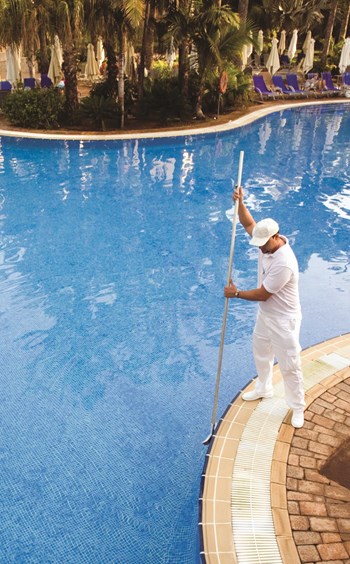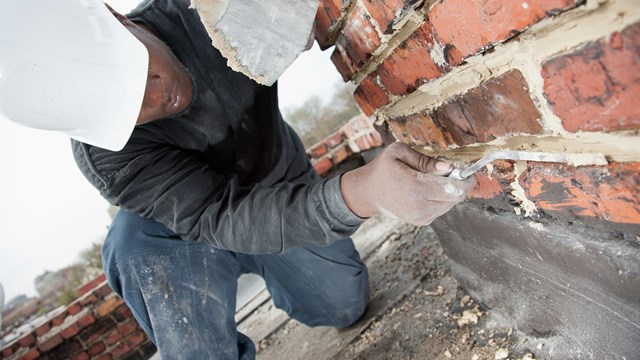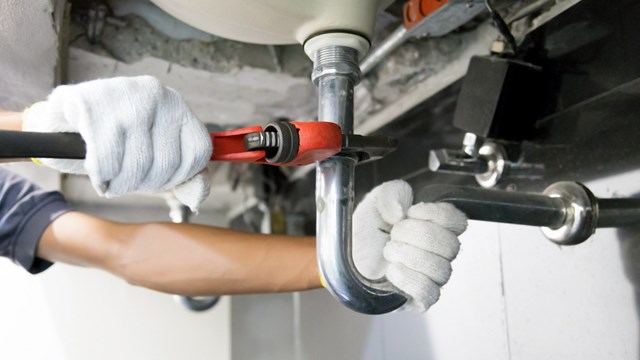
Are your community’s swimming pool and hot tub VGB-compliant? Do you know what that means?
VGB stands for Virginia Graeme Baker, a seven-year-old girl who drowned in June of 2002 when she became stuck after being sucked into a hot tub drain.
Because she was a granddaughter of former U.S. Secretary of State James Baker III, her death captured the attention of Congress. Legislation bearing her name ensued to prevent entrapment, evisceration, and drownings in pools and spas. Signed into law by President George W. Bush on December 19, 2007, the Virginia Graeme Baker Pool & Spa Safety Act required all public pools and spas to install redesigned drain covers or other anti-entrapment technology within a year. Yet, almost three years post-deadline, about a third of the public pools in South Florida still are entrapment-prone.
“Compliance is in the 60 to 70 percent range,” estimates David Cohen, owner of All Florida Pool & Spa Center in North Miami.
Recall Complicates Compliance
To complicate matters, about a million of the new supposedly VGB-compliant drain covers that pool operators installed were recalled in May of 2011. The U.S. Consumer Product Safety Commission found that certification laboratories inaccurately determined the covers’ flow rate capacity.
“VGB drain covers typically are raised,” Cohen explains. “The new improved version has added square footage by making the dome a little higher.”
The risk of liability in servicing a non-compliant pool concerns Dave Ballard, general manager of Horizon Pool & Patio in Wellington and a board member of the Palm Beach County chapter of the Florida Swimming Pool Association (FSPA).
“If we see an old-style drain cover,” he says, “we send a letter saying you have to take care of this right away, or send us a letter saying you won’t. If a main drain cover is missing, I will drop that customer.”
Also concerned are insurance companies writing commercial liability policies for South Florida condominium associations. Several insurers now ask inspectors to verify VGB compliance, but inspectors can’t do that just by looking at a drain cover. Associations should be prepared to give an inspector a copy of current compliance documentation from their Certified Pool/Spa Operator or servicing company.
For more information on the VGB Act, the National Swimming Pool Foundation (NSPF) in Colorado Springs, Colorado offers a free online course at http://nspfcart.eproacademy.org/store/comersus_viewItem.asp?idProduct=305.
Other Safety Concerns
According to a CPSC staff report, 97 suction entrapment incidents occurred in the U.S. between 1999 and 2010, causing 12 deaths and 82 injuries. Although no child has died in the U.S. due to drain entrapment since 2009, the focus on entrapment has obscured other, more frequent pool-safety concerns, says Thomas M. Lachocki, the NSPF’s chief executive officer.
For children younger than five years, the CPSC reported an average of 295 pool and spa related fatalities per year from all causes from 2004 through 2006. “Among children aged one to 14, drowning is the second leading cause of accidental death, and Florida has a substantial share of that,” Lachocki says.
Lachocki says that other safety measures include self-closing gates, fences and other barriers to limit access when the pool is closed, keeping deck furniture at least four feet from the pool so people don’t trip on it and fall in the water, checking the filters and back-washing when the flow rate is low, and keeping an air gap between the pool water and the fill water spigot.
Pool safety also includes housekeeping measures: emptying trash bags, cleaning restrooms, and replenishing restroom supplies. “If the restrooms are disgusting, there’s a greater chance that they won’t be used, and a fecal accident will occur in the pool,” he says.
Lachocki also advises parents to be “within touch range when kids are learning to swim,” and to enroll children in learn-to-swim programs. “Anything we do at young ages to make kids water-competent is good,” he says. “One side effect is they may actually get in shape. In the big picture, we’re helping people to live healthy lives.”
Many Condo Pools
At the beginning of August 2011, Florida had 38,643 commercial swimming pools, reports Bob Vincent, public swimming pool program administrator in the state Department of Health’s Bureau of Water Programs. “Of those, 1,163 are at condos with more than 32 units,” he says. “Another 1,665 are at condos with 32 units and under, that are not ‘public’ by definition.” (They’re exempt under Florida’s 1985 law regulating public pools but still must comply with the VGB Act.)
All commercial pools need a building permit and should be “in-ground” concrete pools, whether they’re at ground level or on an upper-floor deck or rooftop. “Nothing’s impossible, but if you see an above-ground pool, it’s probably not in compliance,” Lachocki says.
Every commercial pool needs a Certified Pool/Spa Operator. “Every pool, small or large, has to be kept up for chemical balance,” Cohen says. Unless they have a Certified Pool/Spa Operator on staff, condos must hire a pool servicing company to maintain the pool. Depending on its size, the season of the year, and the extent to which the pool is used, the servicing company may visit once a week, daily, or anytime in between.
The service company’s operator typically brings their own chemicals and equipment: a water-testing kit, skimmer, pool brush, tile-cleaning brush, and vacuum. Maintaining a pool’s chemistry involves more than just testing the water and tossing in some chemicals. “You don’t add chemicals directly to a commercial pool,” Cohen explains. “Commercial pools are required to have chemical automation, a feeder that will supply chemicals consistently to maintain the proper chemistry.”
Ballard notes that between service company visits, a condominium association is responsible for twice-a-day measurement of its pool’s chemicals. “The larger properties have on-site management companies, and they will do that,” he says. “The smaller properties have no on-site management, so that will not occur. This is a loophole that has been allowed to exist.”
For the smaller condos, a solution would be web-based technology to monitor the pool’s chemistry remotely and alert the servicing company if problems arise. Such technology costs $2,000 to $3,000, but the state doesn’t require it, so it’s not widely used. “Only five percent of my customers have it,” Ballard says.
Five Key Chemicals
Lachocki holds a PhD degree in organic chemistry. “A lot of the chemistry that occurs in swimming pool water is basic organic chemistry,” he says.
Swimming pool operators use five key chemicals:
• Chlorine, a disinfectant to kill bacteria that otherwise could pass disease from one swimmer to the next. “The use of chlorine in swimming pools and drinking water is the biggest public-health advance in the history of mankind,” Lachocki declares. The level of free chlorine in a swimming pool should be about the same as in drinking water, one part to four parts per million.
• Muriatic acid (or sometimes sulfuric acid) to increase the acidity of the water.
• Sodium bicarbonate to make the water more alkaline, moderating the acid level. Added in proper amounts, acid and bicarb balance the pH (acidity) of a pool at about the level of a human eye, 7.4, to achieve bather comfort. Conveniently, this pH level also maintains the effectiveness of the pool’s free chlorine. Water that is too acidic corrodes pool surfaces and equipment; water that is too alkaline causes scale formation as minerals in the water fall out of the solution.
• Calcium to discourage the water from dissolving calcium in the pool finish, which shortens its life.
• Cyan-uric acid, a stabilizer to discourage the chlorine from vaporizing in sunlight.
Calling for Help
Sometimes an on-site pool operator does all the right things, runs into trouble anyway, and calls a service company to diagnose and cure a specific problem such as an equipment malfunction or algae bloom.
“Leaks are a tremendous issue in South Florida,” Cohen says, “because our ground has some movement that causes pipes to break, especially on Miami Beach and Key Biscayne. We also get calls for normal wear-and-tear repairs on pumps, filters, and chemical feeders.”
Algae may flourish where trees and shrubs drop leaves in the pool, and in pools adjacent to golf courses where fertilizer is sprayed. Phosphates from both sources are a primary nutrient for algae, Ballard explains, “so we use a phosphate remover from time to time to starve the algae.”
Copper- and silver-based algaecides also are available but can cause other problems. “If a copper algaecide isn’t buffered, the copper can come out of the solution, and you get blue-green staining throughout the pool,” Ballard says.
Pools with cloudy water—start-ups, and victims of improper maintenance—may need a clarifier, a product containing positively-charged particles that attract and aggregate debris so the filter can capture it more rapidly.
Pools filled with well water may contain minerals that cloud the water and tint it a greenish brown. For such situations, Ballard uses Metal Magnet, a product that attracts metallic ions.
For pools with scale deposition, Ballard says, “most of the time we just drain and acid wash them. If the finish in good shape, we can restore them to near-new condition.”
Still another reason to call for help is what Ballard calls a “code brown”—fecal contamination. “The on-site person may not be sure of the length of time to close the pool and what the requirements are to treat the pool with chlorine and then reduce the chlorine to an acceptable range for swimming,” he says.
A swimming pool is an asset to your community and its residents, and an amenity that everyone should be able to enjoy. A knowledgeable staff and a proactive approach to maintenance and upkeep can be the best defense against potential problems, and will keep your pool in good shape for many years to come.
George Leposky is a freelance writer and a frequent contributor to The South Florida Cooperator.






3 Comments
Leave a Comment